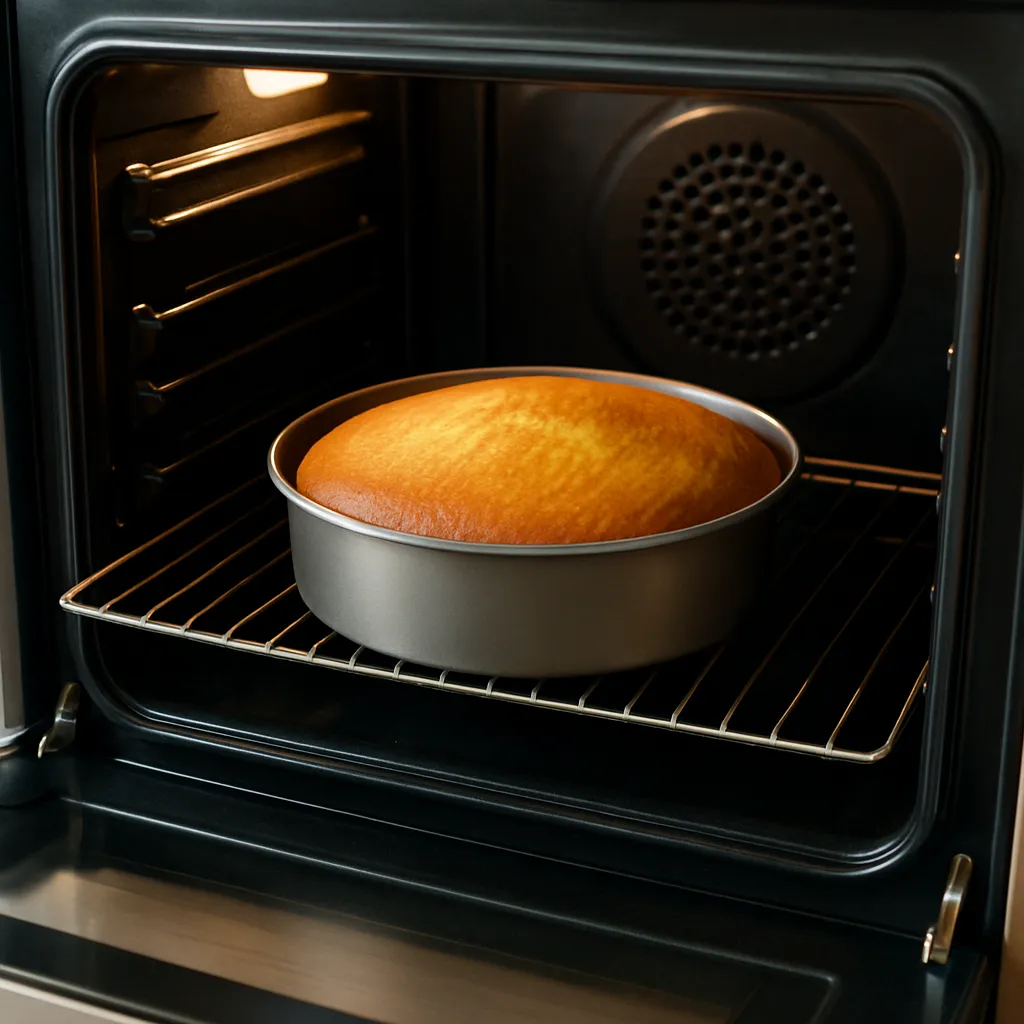Introduction
One of the most common challenges in baking is determining exactly how long to bake a cake. Take it out too soon, and you risk a soggy center; leave it in too long, and it will dry out. Each cake type has its own ideal baking time, influenced by its ingredients, size, and pan type. Knowing these guidelines — and how to test for doneness — will help you achieve perfect results every time.
Why Baking Time Matters
Baking time isn’t just about cooking the cake through — it’s also about texture, moisture, and flavor. A cake that’s baked for the right amount of time will have a tender crumb, balanced moisture, and an even rise. Too short, and the structure may collapse. Too long, and the crumb will be coarse and dry. Timing also impacts caramelization on the surface, which adds flavor and color. Mastering this balance is one of the key skills that separates average baking from professional-quality results.
General Guidelines for Baking Times
Sponge and Genoise Cakes
- Temperature: 350°F (175°C)
- Time: 20–25 minutes for thin layers, 25–35 minutes for thicker layers
- Tips: Lightly springy to the touch when done; toothpick should come out clean.
Butter Cakes (Vanilla, Chocolate, Marble)
- Temperature: 325–350°F (160–175°C)
- Time: 25–35 minutes for 8–9 inch rounds
- Tips: Check early; butter cakes can overbrown quickly.
Pound Cakes
- Temperature: 325°F (160°C)
- Time: 50–70 minutes depending on loaf or bundt pan
- Tips: Cover loosely with foil if browning too fast before the center sets.
Angel Food and Chiffon Cakes
- Temperature: 325°F (160°C)
- Time: 35–50 minutes in tube pans
- Tips: Invert the pan to cool to prevent collapse.
Cupcakes
- Temperature: 350°F (175°C)
- Time: 15–20 minutes
- Tips: Rotate pan halfway for even baking.
Factors That Affect Baking Time
- Pan material: Dark pans absorb more heat and may shorten baking time.
- Pan size: Larger, thinner cakes bake faster; smaller, thicker ones take longer.
- Oven type: Convection ovens bake faster due to circulating air; reduce temperature by 25°F (15°C).
- Altitude: Higher altitudes can require adjustments in time and temperature.
- Batter temperature: Cold batter can extend baking time slightly.
How to Test for Doneness
- Toothpick Test: Insert into the center; it should come out clean or with a few moist crumbs.
- Touch Test: Lightly press the top; it should spring back.
- Visual Cues: Edges start to pull away from the pan, and the top is evenly browned.
Practical Example: Classic Chocolate Layer Cake
For two 9-inch chocolate cake layers, bake at 350°F (175°C) for 28–32 minutes. Start checking at 25 minutes with the toothpick test. If the centers are set and spring back, remove from oven and cool in pans for 10 minutes before transferring to a wire rack. Always account for your oven’s quirks — some bake hotter, and others have hot spots that can influence baking times.
Frequently Asked Questions (FAQ)
Q1: My cake is done on the edges but raw in the middle. Why?
The oven may be too hot, causing the outside to set before the inside cooks. Lower the temperature and bake a bit longer.
Q2: Can I open the oven to check my cake?
Not in the first two-thirds of the baking time, as heat loss can cause collapse. Check only toward the end.
Q3: Should I follow the recipe’s time exactly?
Always use it as a guideline but rely on visual and touch cues for accuracy.
Q4: How can I prevent overbaking?
Set a timer for a few minutes before the shortest suggested time and check for doneness.
Q5: Can I bake multiple cakes at once?
Yes, but ensure proper air circulation in the oven, and rotate pans halfway through for even baking.
Q6: How does pan color affect time?
Dark pans brown faster; reduce temperature by 25°F (15°C) and monitor closely.
Q7: Does using parchment affect baking time?
Not significantly, but it can help with even baking and easy release.
Q8: Why is my cake taking longer than the recipe says?
Oven temperature may be off — use an oven thermometer to check accuracy.
Q9: Should I rely only on color to judge doneness?
No. Color is a helpful cue but should be confirmed with texture and toothpick tests.
Q10: Can I use a cake thermometer?
Yes. For most cakes, an internal temperature of around 200–210°F (93–99°C) indicates doneness.
Conclusion
Mastering baking times is essential for consistent, high-quality cakes. While recipes provide good guidelines, learning to read your cake’s visual and tactile signs is the real key. With practice, you’ll know exactly when to take each cake out for the perfect balance of moisture, texture, and flavor — every single time. A cake baked to perfection doesn’t just taste better; it also slices neatly, holds up well for decorating, and leaves a lasting impression on everyone who enjoys it.

